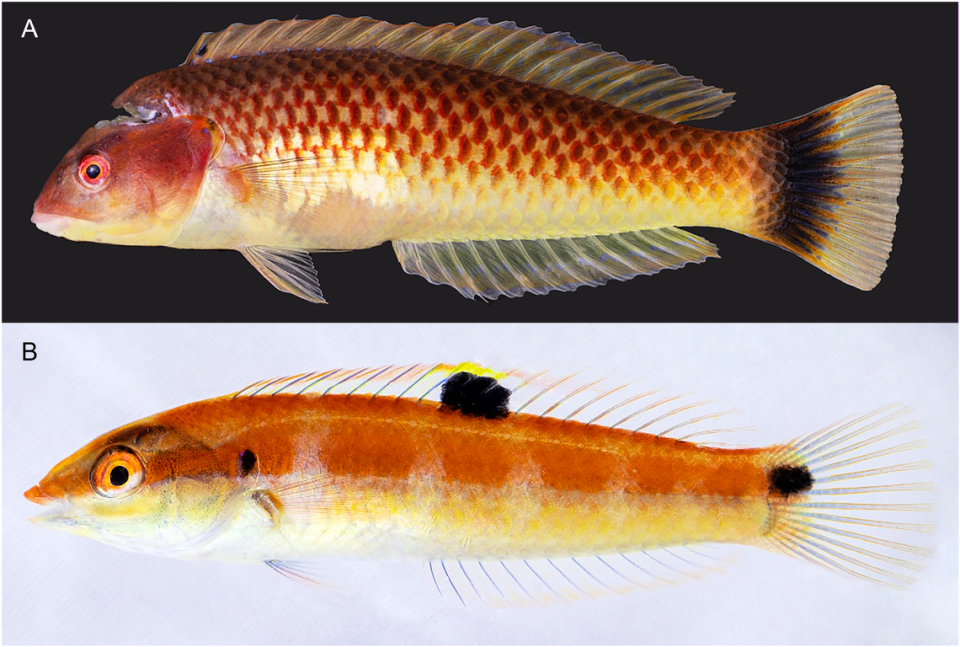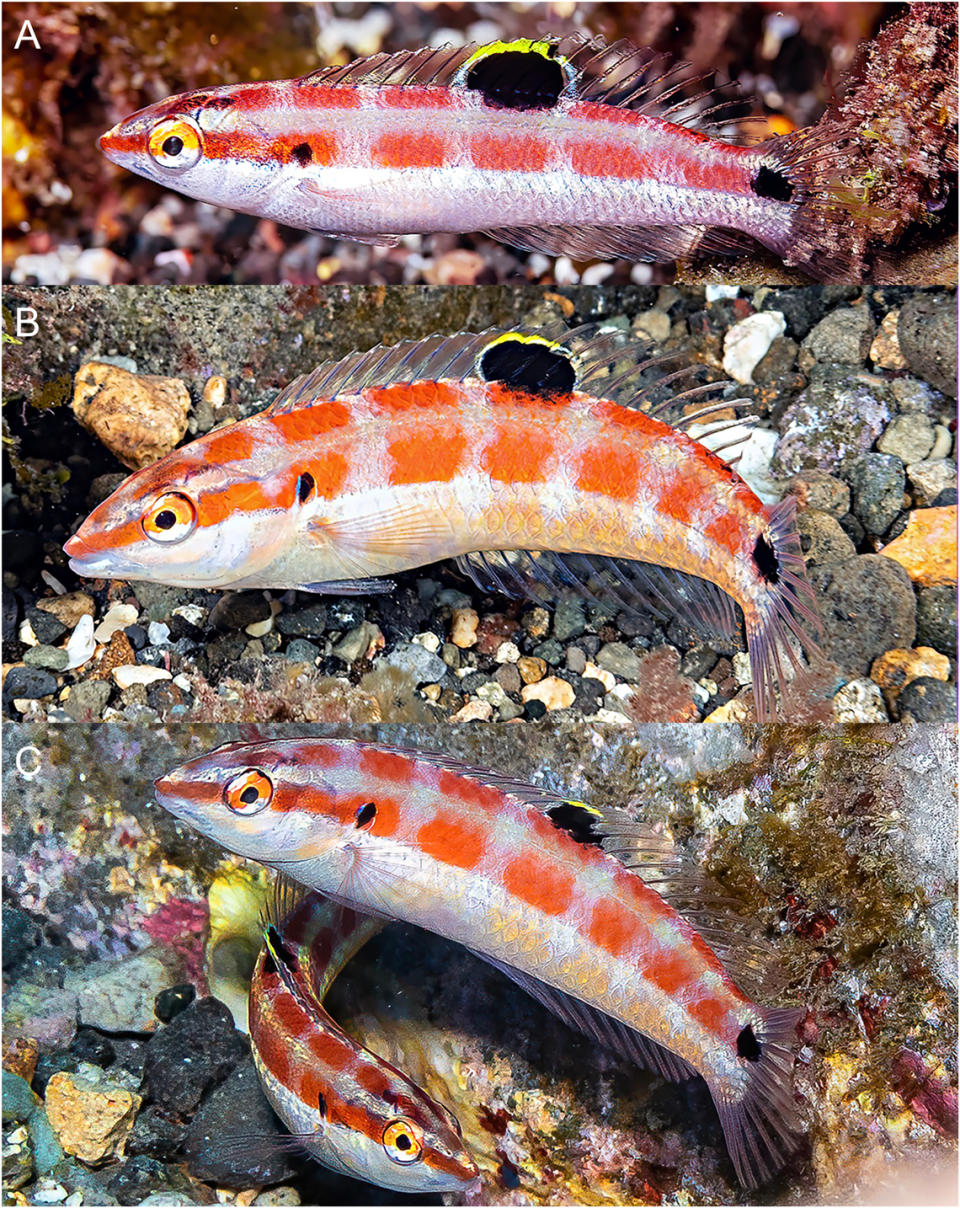Divers spot ‘mysterious’ orange creature off remote island. It belongs to a new species
While swimming off a remote Pacific Ocean archipelago in 2013, a diver spotted a “mysterious” and brightly colored fish.
He quickly snapped several blurry photographs before it darted away, leaving behind a trail of questions in its wake.
Now, over a decade later — after returning to the island chain — researchers have identified the peculiar fish, which they said belongs to a brand new species, according to a study published on Feb. 28 in the journal PeerJ.

Discover more new species
Thousands of new species are found each year. Here are three of our most eye-catching stories from the past week.
→ Large 'cryptic' creature found lurking under bridge in Ecuador. It's a new species
→ 'Long'-tailed creature — with unique snout — found on Angola farm. It's a new species
→Pregnant creature — with 'light orange' bumps on its skin — is a new species. See it
The Revillagigedo Archipelago, located 500 miles west of Mexico, is known as the “Mexican Galapagos.” Its protected waters are teeming with unique marine life — making it popular with recreational divers but still relatively understudied.
In 2022, a team of researchers conducted dozens of dives off the island chain, where they photographed over 100 species, according to a news release from the Scripps Institution of Oceanography.
Researchers were keen on encountering the mystery fish photographed in 2013, but as the expedition entered its final days, they saw no signs of it.
However, on the very last day of the survey, one of the researchers captured a small fish that matched up perfectly with the fish in the photograph. Eventually, seven other specimens were collected.
After tissue samples were taken and DNA analyses were conducted, it was revealed that the fish belonged to a previously unknown type of wrasse, a family of colorful and diverse fish. It was given the name Halichoeres sanchezi in a nod to Carlos Armando Sanchez Ortiz, who organized the expedition.

The specimens, which ranged in size from 1 to about 6 inches, displayed a remarkable degree of sexual dimorphism, researchers said.
The females were smaller, exhibiting reddish stripes across their bodies, while the males had orange-red bodies with yellow bellies.
Interestingly, the species are sequential hermaphrodites, meaning they are born female, with some transitioning to males later in life.
Upon switching to males, the fish take on a more remarkable color pattern — in order to woo their female counterparts.
The species’s discovery brings the total number of the archipelago’s native fish species to 14, which highlights the need for the Mexican government to continue protecting the nearby waters, researchers said.
“It’s amazing that we can still find species that are new to science in a place where people are visiting pretty regularly,” Ben Frable, one of the study authors, said in the release. “It just shows how big and complex the world is.”
Boaters caught trying to smuggle over 110,000 live eels out of Puerto Rico, feds say
‘Medusa’ sea creature — with up to 11 tentacles — discovered by snorkelers off Mexico
Trove of ancient ceramics — spanning 1,000-year period — unearthed from buried city

